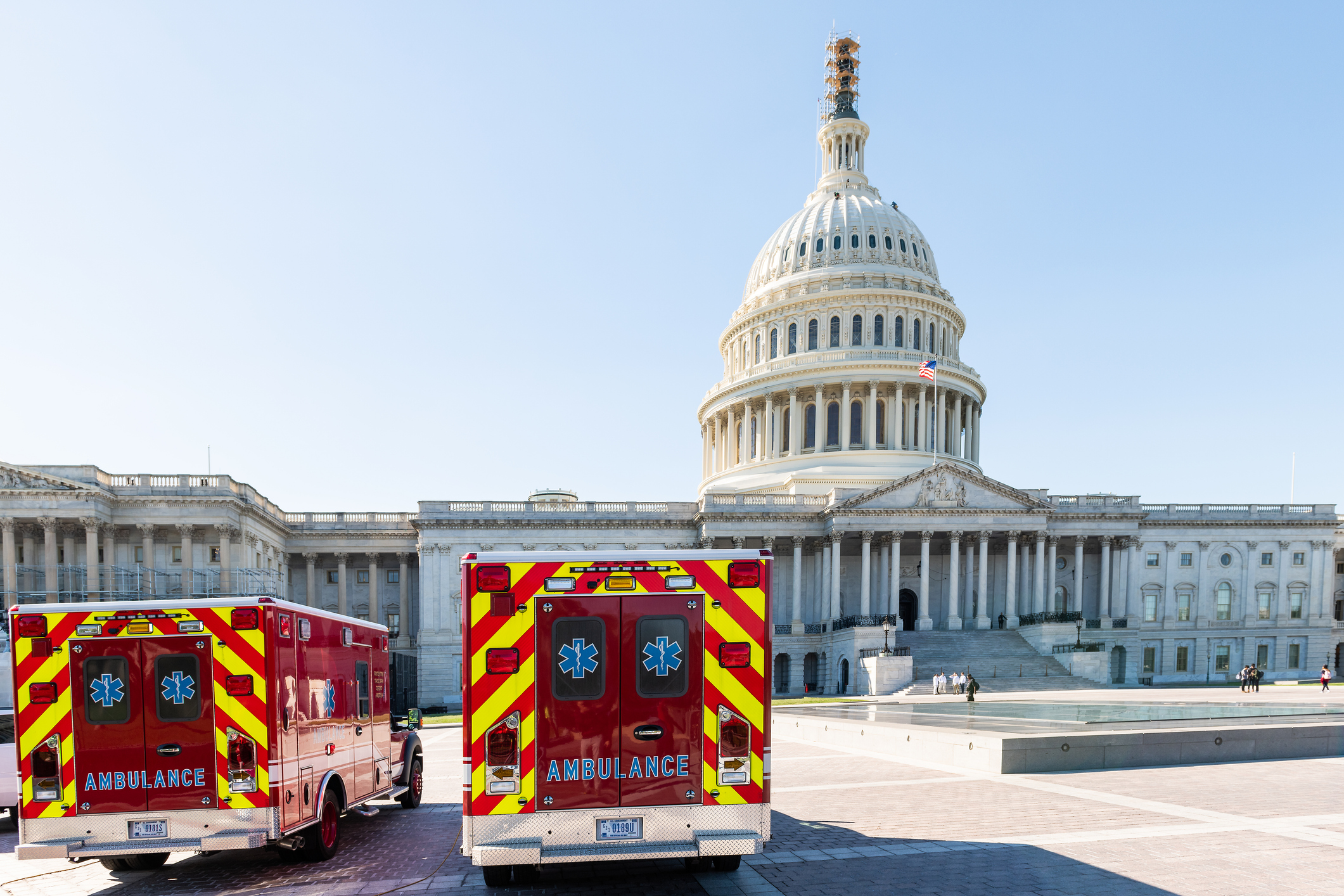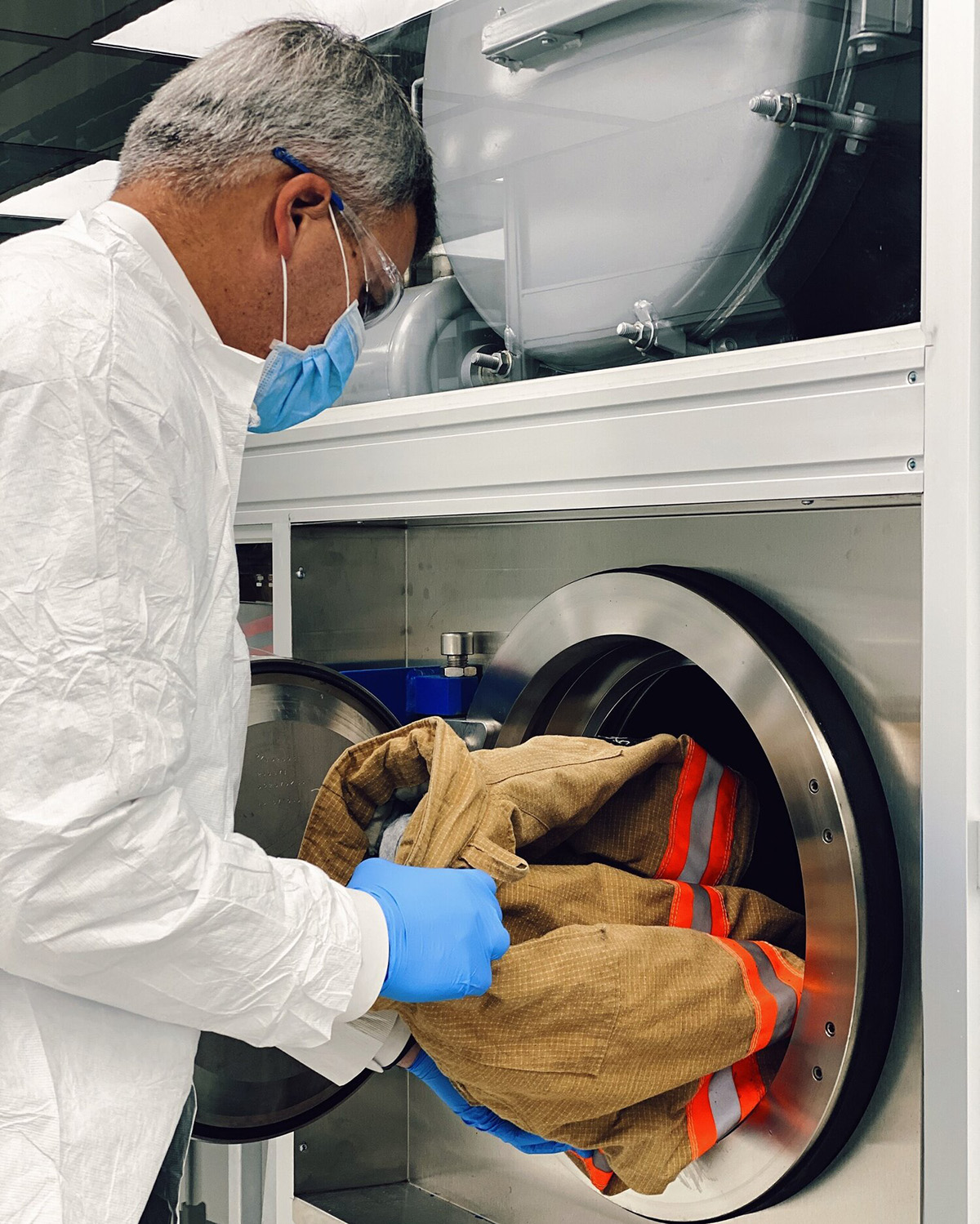By: Emergency Technical Decon Team
Across the U.S., state legislation around PFAS—so‑called “forever chemicals”—is accelerating. Fire departments are now being asked to adapt procurement, gear care, and decontamination practices to meet new laws. PFAS are widely used in firefighting foams and in moisture barriers of turnout gear; mounting research shows exposure is linked to cancer, immune system disruption, hormone imbalance, and other serious health outcomes.
New Laws Are Reshaping Fire Service Standards
In 2024‑2025, multiple states have passed or are considering laws that specifically target PFAS in firefighting gear. Some examples:
- California AB 1181: California is moving toward banning PFAS and other toxic chemicals in turnout gear. By 2027, California’s Occupational Safety and Health Standards Board is required to develop standards to eliminate or limit PFAS, flame retardants, and similar hazardous chemicals in firefighter PPE. (SFFCPF)
- New York State: Starting January 1, 2028, New York will prohibit the sale of firefighting personal protective equipment (FPPE) that contains intentionally added PFAS. Manufacturers must disclose PFAS content at point of sale. (SGSCorp)
- Colorado’s PFAS Laws (SB 24‑081): Colorado has expanded PFAS product bans and labeling requirements, and established that PFAS‑containing firefighting foam must be stored safely, fully contained during use, and reported if release occurs. (CDPHE)
These laws are part of a broader trend in many states (e.g. Maine, Massachusetts, etc.) phasing out PFAS in gear and foam, demanding greater transparency, and offering financial support or regulatory guidance to help departments comply. (Safer States)
Why This Matters for Your Department
These legal changes aren’t just policy—they’re reshaping risk and financial exposure for fire departments. For departments using turnout gear manufactured with PFAS, there are long‑term health risks for personnel (including chemical exposure during fires, wash cycles, and gear handling), increasingly strict regulatory demands, and potential liability if gear is shown to contribute to health issues. Also, gear replacement is expensive; using ineffective cleaning methods accelerates wear, reduces gear life, and may void warranties or fail compliance standards.
What You Can Do Now
Here are concrete steps departments should take to stay ahead:
1. Monitor State Legislation & Deadlines
Assign or identify someone internally (e.g. safety officer, grants coordinator, or fire marshal) to stay current on PFAS laws in your state. Laws like California’s AB 1181, New York’s ban effective 2028, and Colorado’s labeling and foam‑containment rules require clear timelines. Knowing what is required (e.g. disclosure, ban dates, decon standards) helps plan gear procurement, budgeting, and policy in advance.
2. Inventory Your Gear & PPE PFAS Status
Develop a detailed inventory of your current turnout gear, gloves, helmets, and other PPE. For each item, note manufacturer, date of purchase, moisture barriers and known PFAS content (if disclosed), and current decontamination method. This lets you understand which gear is likely affected by tightening rules, which needs replacement, and where your current decon practices may be insufficient.
3. Evaluate Decontamination Methods Critically
Water‑based washer/extractors are widely used but are increasingly recognized as inadequate for removing embedded PFAS, PAHs, hydrocarbons, and other persistent chemicals. Traditional washing can leave residues, degrade moisture barriers, and discharge hazardous wastewater. Better options are “closed‑loop, non‑aqueous” cleaning systems like liquid CO2 that don’t discharge water, can physically remove high percentages of PFAS, preserve gear integrity, and provide traceability of cleaning cycles. When possible, include in your RFP or grant narrative language requiring validation data (lab/third‑party), NFPA compliance, and closed‑loop operation.
4. Include the Right Language in RFPs & Grant Applications
When writing an RFP or applying for FEMA Assistance to Firefighters Grants (AFG), be explicit about what you need:
- Clearly specify that PFAS‑containing gear must be disclosed and manufacturers must provide chemical content documentation.
- Require decontamination using a closed‑loop, non‑water‑wash or waterless system that has verified PFAS removal efficacy (lab or third‑party evidence).
- Include NFPA 1851 compliance and any state or federal standard references.
- Budget for lifecycle costs: cleaning, repair, inspection, and gear replacement.
5. Seek Funding & Partnerships
Many state grant programs are now targeting PFAS elimination, gear replacement, or advanced decon systems. Use your updated inventory and health risk documentation to support grant applications. Consider partnering with regional agencies to share decontamination resources. Also, evaluate service providers that can offer certified, PFAS‑removing cleaning solutions.
As PFAS legislation catches up, departments must upgrade not just gear, but the cleaning protocols they rely on. Water washing—even enhanced with additives—does not sufficiently remove deeply embedded PFAS and other persistent contaminants. The safer, more effective path involves closed‑loop, PFAS‑removing cleaning systems that preserve gear integrity, reduce firefighter exposure, meet NFPA and state compliance, and support financial stewardship through longer gear lifespan.
Stay ahead of compliance and protect your department in the process. Request a decontamination service from ETD.



